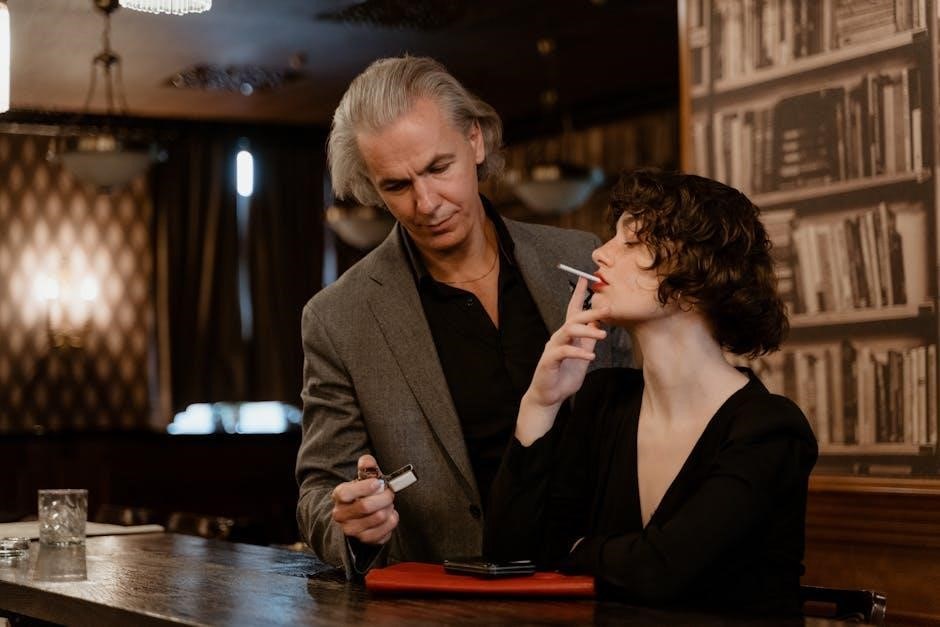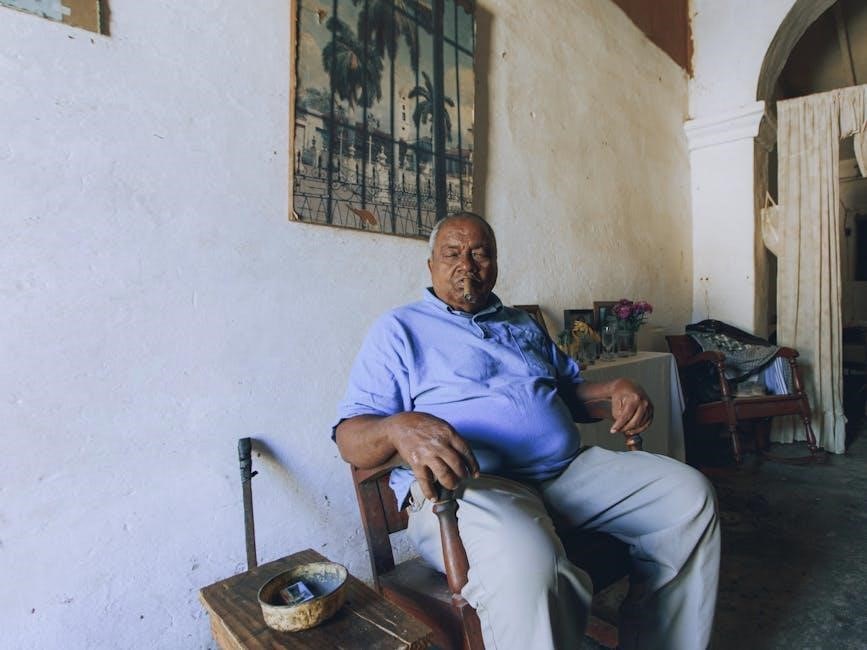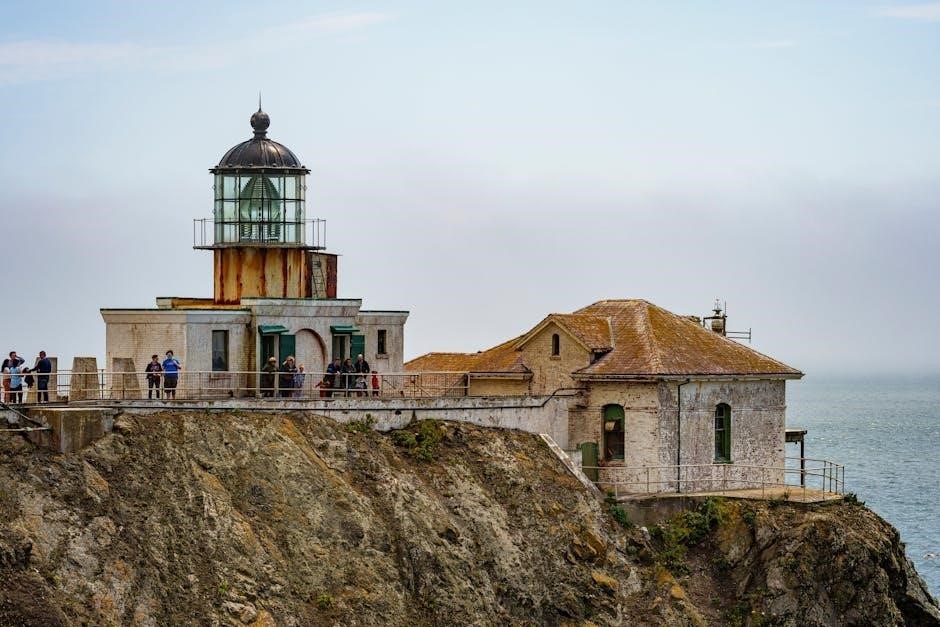Overview of “The Gentleman’s Guide to Vice and Virtue”
Mackenzi Lee’s novel introduces Henry “Monty” Montague, a young British lord, embarking on the Grand Tour. Accompanied by his best friend Percy, and sister Felicity, Monty seeks pleasure, but finds himself in a high-stakes heist, leading to self-discovery.

Character Analysis
The novel features diverse and sympathetic characters. Monty is a bisexual lord, grappling with his identity. Percy is a loyal friend, and Felicity is intelligent and independent. The characters are sympathetic, each contributing to the story’s themes.
Henry “Monty” Montague
Henry “Monty” Montague, the protagonist, is a young, privileged English lord in the 1700s. He identifies as bisexual and is known for his roguish passions and penchant for mischief. Despite attending the finest boarding schools, Monty struggles to conform to societal expectations and constantly faces disapproval from his father.
Monty’s journey is marked by self-discovery, as he confronts his desires and learns to embrace his true identity. His character embodies themes of vice and virtue, reflecting the complexities of finding happiness and accepting oneself in a restrictive society. He is witty, romantic, and often driven by pleasure.
Percy
Percy is Monty’s steadfast best friend, accompanying him on the Grand Tour. Secretly, Monty harbors romantic feelings for Percy, adding another layer to their complex relationship. Percy’s character is integral to the exploration of friendship and love within the novel.
He serves as a grounding force for Monty, often providing support and guidance during their adventures. While details about Percy’s background are revealed throughout the story, his loyalty and unwavering friendship with Monty remain constant. Percy’s presence highlights the themes of acceptance and the enduring power of love in its many forms. His role is crucial to Monty’s self-discovery.
Felicity Montague
Felicity Montague, Monty’s intelligent and fiercely independent sister, joins him and Percy on their Grand Tour. She possesses a sharp wit and a strong desire for knowledge, often clashing with the societal expectations placed upon women in the 18th century. Felicity challenges the conventions of her time, seeking intellectual pursuits and personal fulfillment beyond marriage.
Her character embodies feminist ideals, as she strives for autonomy and equality. Throughout the journey, Felicity’s resourcefulness and determination prove invaluable to the group. She adds a layer of complexity to the narrative, highlighting the limitations imposed on women during the era. Felicity’s story resonates with modern readers.

Plot Summary
Monty, Percy, and Felicity’s Grand Tour turns into a thrilling adventure after a heist. Their journey involves self-discovery, acceptance, and navigating complex relationships amidst 18th-century Europe, challenging social norms and expectations.
The Grand Tour Begins
Henry “Monty” Montague, a young and unruly British lord, reluctantly embarks on the traditional Grand Tour of Europe, a rite of passage expected of gentlemen in the 18th century. Accompanied by his steadfast best friend, Percy, for whom he harbors secret affections, and his intelligent and fiercely independent sister, Felicity, Monty anticipates a journey filled with wine, women, and scandalous pursuits.
However, Monty’s hedonistic plans are quickly complicated by his father’s stern expectations and the underlying pressure to mature into a responsible heir. As they set off from England, the trio is blissfully unaware that their carefully orchestrated itinerary will soon devolve into a whirlwind of unexpected adventures, perilous encounters, and life-altering revelations that will challenge everything they thought they knew about themselves and the world around them.
High-Stakes Heist and Adventure
Monty’s Grand Tour takes an unexpected turn when a seemingly harmless escapade spirals into a high-stakes chase across Europe. A reckless decision lands Monty, Percy, and Felicity in the middle of a dangerous plot involving stolen artifacts and secret societies. Forced to flee, they encounter highwaymen, navigate treacherous landscapes, and face perilous situations that test their courage and loyalty.
As they delve deeper into the mystery, they realize the gravity of their situation. The trio is not only running from the law but also from powerful individuals who will stop at nothing to protect their secrets. The pursuit forces them to rely on their wits, resourcefulness, and each other as they unravel a conspiracy that threatens to expose long-hidden truths and alter the course of their lives forever. Their journey becomes a thrilling adventure filled with danger, intrigue, and unexpected alliances.
Self-Discovery and Acceptance
Amidst the chaos of their adventures, Monty, Percy, and Felicity each embark on a journey of self-discovery. Monty confronts his bisexuality, learning to accept and embrace his true desires despite societal expectations and his father’s disapproval. Percy grapples with his own identity and health, finding strength in vulnerability and challenging the limitations imposed upon him.
Felicity, fiercely independent and intelligent, defies the constraints of her gender, pursuing her passion for medicine and seeking a life beyond the traditional roles prescribed for women. Through trials and tribulations, the characters confront their insecurities, challenge their beliefs, and ultimately learn to accept themselves for who they are. Their experiences on the Grand Tour become a catalyst for personal growth, fostering resilience, self-awareness, and a deeper understanding of their places in the world, paving the way for a more authentic and fulfilling future.

Themes Explored
The Gentleman’s Guide to Vice and Virtue delves into themes of love, identity, and friendship. It also tackles racism, disability representation, and self-discovery, resonating with contemporary readers.
Love and Identity
The novel champions the power of love in its many forms, showcasing romantic and platonic bonds. Monty’s journey is one of self-discovery, as he grapples with his bisexuality and societal expectations. He learns to embrace his true self, defying the constraints placed upon him by his family and the 18th-century setting.
The story explores the complexities of navigating one’s identity in a world that often seeks to define individuals by rigid categories. Through his relationships with Percy and Felicity, Monty confronts his desires, ultimately finding acceptance and understanding. His journey reflects the universal struggle to reconcile personal truth with external pressures.
Friendship
Friendship is a cornerstone of “The Gentleman’s Guide to Vice and Virtue,” explored through the bond between Monty and Percy. Their connection transcends societal norms, acting as a safe harbor amidst personal turmoil. This bond is a testament to unwavering support, acceptance, and loyalty, acting as a pivotal force in their development.
Felicity also plays a crucial role, adding a layer of camaraderie and shared experience to the group’s dynamic. The novel presents a compelling argument for the power of friendship as a source of strength, offering a powerful message about the significance of human connection. The characters’ reliance on one another highlights the importance of genuine companionship.
Racism
“The Gentleman’s Guide to Vice and Virtue” confronts the prevalent racism of the 18th century through its characters’ experiences and interactions. The narrative sheds light on the systemic inequalities and prejudices faced by individuals from marginalized racial backgrounds. It’s a critical lens through which the story examines the era’s social injustices, challenging readers to reflect on the historical context and its lasting impact.
The novel showcases instances of discrimination and prejudice that highlight the era’s problematic attitudes. By integrating these themes, Mackenzi Lee prompts discussions about the importance of recognizing and combating racial bias. The story reveals the harmful realities of racism.
Disability Representation
“The Gentleman’s Guide to Vice and Virtue” offers a nuanced portrayal of disability, particularly through the character of Percy. His experiences provide a valuable perspective on the challenges and realities faced by individuals with disabilities in the 18th century. The narrative explores themes of acceptance, resilience, and the importance of challenging societal perceptions of disability.
Percy’s character is not defined solely by his disability, but rather, it is integrated into his identity. It emphasizes his strengths and complexities. Mackenzi Lee approaches disability with sensitivity, fostering greater understanding and empathy among readers. The author shows it’s important to give people with disabilities an important roll.

Historical Context
Set in the 18th century, “The Gentleman’s Guide to Vice and Virtue” embraces the Grand Tour tradition. It reflects the era’s social norms while challenging them through its progressive themes of identity and acceptance.
The 18th Century Setting
“The Gentleman’s Guide to Vice and Virtue” is vividly set against the backdrop of 18th-century Europe, a period defined by rigid social hierarchies, burgeoning scientific advancements, and the Enlightenment’s intellectual ferment. The novel deftly incorporates elements of this era, showcasing the stark contrasts between aristocratic privilege and societal constraints. Monty’s libertine tendencies clash with the expectations placed upon a gentleman of his time, creating both comedic and poignant moments.
The narrative explores the era’s prevailing attitudes towards sexuality, class, and disability, offering a nuanced portrayal of the challenges faced by those who deviated from the norm. The opulent settings, elaborate costumes, and societal customs are meticulously depicted, providing readers with a rich and immersive experience of the 1700s.
The Grand Tour Tradition
The Grand Tour, a traditional rite of passage for young, wealthy European men in the 18th century, serves as a central plot device and thematic element in “The Gentleman’s Guide to Vice and Virtue.” This extended journey across the continent was intended to broaden their horizons, refine their cultural sensibilities, and prepare them for leadership roles. However, for Monty, the Grand Tour becomes an opportunity for debauchery and evading responsibility, reflecting his rebellious nature.
Lee subverts the traditional purpose of the Grand Tour by focusing on Monty’s personal growth and self-discovery rather than solely on cultural enrichment. The journey becomes a catalyst for him to confront his identity, navigate complex relationships, and question societal expectations, ultimately transforming him in ways that the conventional Grand Tour never intended. The tour highlights themes of adventure, exploration and self-discovery.
